by Ferne Arfin 11 September 2023
Discovering Aisne
A road trip from Paris to Laon
This Paris to Laon itinerary has some of France’s oldest cathedrals, ancient underground passages, literary connections, important war memorials, champagne, good local beer and gingerbread with everything.
With apologies to Simon and Garfunkle: Slow down, you move too fast.
We’ve all done it – raced too fast around a region noted for its history and famous sites, ticking all the boxes, cramming in all the “must see” places. Then we get home and discover that we can hardly remember enough to explain our snapshots to our friends. We’ve seen too much but learned little more than we could have from the captions on picture postcards.
I was recently reminded that I’m as guilty of this as the next person. I returned from three days in a region I’d never visited before, a region that deserved a week or more of my attention. I was tired, sore, headachy and actually too ill to enjoy the extra day I’d booked in my favourite city in the world. So, by way of redress, I’ve planned an itinerary in a fascinating part of Aisne, the region northeast of Paris. You could, technically, cover all this ground in a day. But I promise you you’ll have much better memories if you take your time, spending at least three days with two overnight stays or even longer on this road trip from Paris to Laon.
Day 1 – Paris to Bubbly Château-Thierry
And when I say bubbly I mean the real stuff. Château Thierry sits on the edge of the Marne area of the Champagne AOC and your first stop is Champagne Pannier which occupies some of the oldest cellars in the region.
No need for an early start. The town is under two hours from Paris with most of the trip on the high-speed autoroute, the A4, so you have plenty of time to enjoy a leisurely petit dejeuner in Paris before you head out.
This champagne house has a boutique where you can sample (for a small fee) and buy their products but the key reason for visiting is to tour their ancient caves, originally 12th-century chalk quarries, and learn about the origins of champagne making and the méthode champenoise. Tours, which should be booked on their website, are offered daily, year-round, usually at 2 p.m.
Explore this post
- Day 1 – Paris to Bubbly Château-Thierry
- Morning Day 2 – Château-Thierry to Soissons
- Second Battle of the Marne
- Closer to Château-Thierry
- And in Château-Thierry itself
- Afternoon Day 2 – Soissons to Laon
- The Abbey of Saint Jean des Vignes
- Come the Revolution
- Late Afternoon Day 2 – Laon, the crowned mountain
- Finish the day with a visit to the Cathedral
- And so to bed
- Day 3 – Explore Laon
- Did you know? Fun facts about Laon
- You might also like
Leave the centre of Paris on the A4 toward Reims. Take exit 20 to the D1 toward Troyes. In just a few miles, take a right on rue Roger Catillon. You’ll see a large sign painted on the side of a building at the beginning of the street. Champagne Pannier is at 23 Rue Roger Catillon, 02400 Château-Thierry, France
Click image below for more pictures and information
After your tour of the champagne house, return to the D1 and follow signs for the centre of Château Thierry.
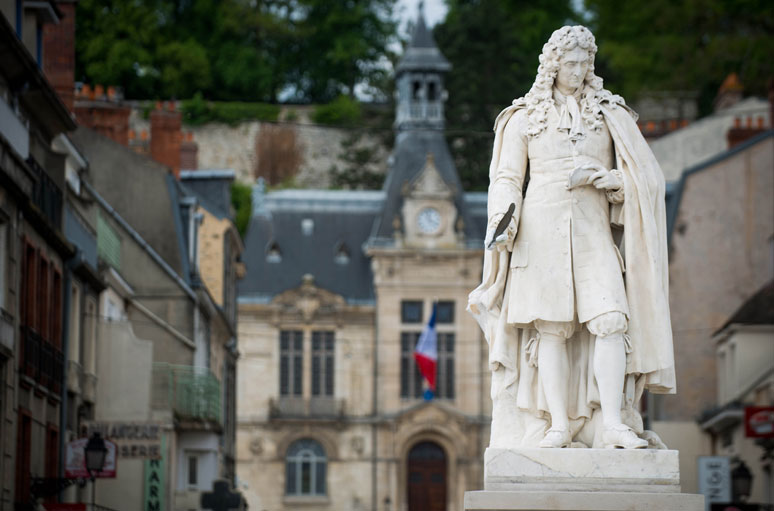
Statue of Chateau Thierry’s most famous son, 17th century poet and fabulist, Jean de la Fontaine, takes pride of place in front of the town’s main square and the town hall. © Amin TOULORS
The town of Château-Thierry rises from the banks of the Marne to its original fortified settlement high over vineyards and farmlands on the edge of Champagne. Today, it is notable as the birthplace and lifetime home of the French poet and fabulist, Jean de la Fontaine and as the location of two crucial battles at the beginning and end of WWI (see Day 2 below.)
Arrive in the late afternoon, following your champagne tour and climb to the top of the town for the views from the castle ruins. The castle that gives the town its name dates from early 8th-century fortifications built and rebuilt by the Frankish kings. Today it is a ruin but the winding climb offers stunning views of the plains and lower town below. Read more about the chateau
Anyone who has taken school French has probably studied some of Jean la Fontaine’s fables. I can remember my class’s sing-song recitation of La Cigale et La Fourmi (The Grasshopper and the Ant) and Le Renard et les Raisins (The Fox and the Grapes). La Fontaine spent most of his life here, living in the house where he was born until he was 55 years old. The house is normally a museum but unfortunately, at the moment, it is being renovated. You’ll have to wait until 2025 to see what they’re doing with it. Take a walk by it though to see that, while apparently on the outs with the King and not welcome at court, La Fontaine certainly did not live the life of an impoverished poet.
Find a place to stay and restaurant options in Chateau Thierry on TripAdvisor
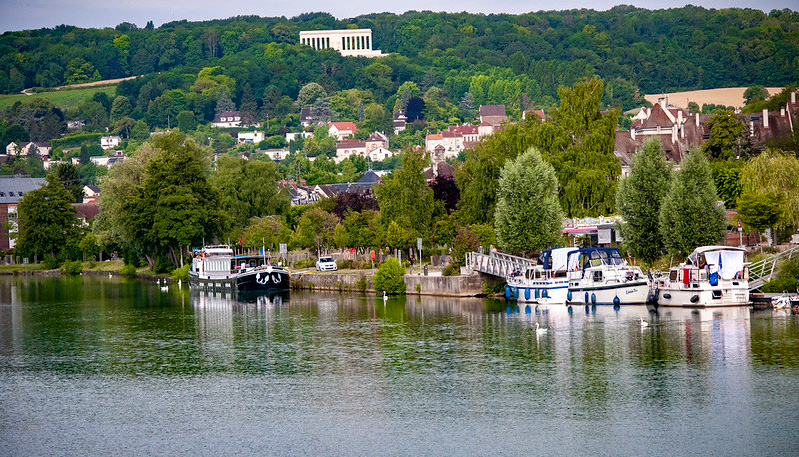
World War I Chateau-Thierry American Monument, designed by Paul Cret, overlooks the River Marne and the Marne Valley from WWI Hill 204 about two miles west of Chateau Thierry. It commemorates the French and American achievements in the Second Battle of the Marne, the turning point of the war. A map on the east side of the monument shows American military operations in the Marne region. An orientation table points out important battle sites nearby. ©Wilfrid Colin (Milestty] ccl
Morning Day 2 – Château-Thierry to Soissons
Château-Thierry played such a pivotal role in WWI, during the first and second Battles of the Marne, that it was awarded a collective Legion d Honneur, France’s highest national award for valour. It is one of only 64 communities in France to be so honoured. On the morning of Day 2, visit some of the associated sites and monuments.
The First Battle of the Marne, from 6 to 12 September 1914, was a strategic victory for British and French forces. They were able to stop a German offensive that saw seemingly unstoppable German forces March across Europe to within less than 50 miles of Paris. Most of the sites associated with this battle are within an hour’s reach of Château Thierry but too far off this road trip itinerary to be included.
Second Battle of the Marne
The memorials and sites associated with the Second Battle of the Marne are more easily accessible from Chateau Thierry. This battle was the turning point of WWI. In July 1918, French forces equipped with 350 tanks and joined by other Allied forces including 85,000 American infantry soldiers and Marines, stopped the last German western 0ffensive of the war and prevented German forces from crossing the Marne. Within 100 days the Germans had surrendered and sued for peace.
But the loss of life, on all sides, was enormous. More than 6,000 American war dead, are buried in the Oise-Aisne American Cemetery and Memorial, about 17 miles from Chateau-Thierry. Among them is American poet Joyce Kilmer who wrote the poem “Trees” that most American school children learn. It’s the poem that ends: “Poems are made by fools like me, but only God can make a tree.”
Another 2,289 are buried at the Aisne-Marne American Cemetery, a 42.5 acre site at Belleau Wood, about 7 miles away on the D9. An impressive memorial there commemorates the Battle of Belleau Wood, where the newly arrived US Marines were sent to support more experienced but exhausted British and French troops. Commanded to hold the line, the Marines led six separate assaults against the Germans before halting their advance. The woodland surrounding the cemetery still has some of the artillery from the battle.
Closer to Château-Thierry
On a hill, two miles west of the town, The World War I Chateau-Thierry American Monument celebrates French and American achievements during and after the battles of the Marne. It commands an impressive view of the Marne Valley and there is an orientation table from which you can spot various landmarks of the battles.
And as an aside to the major engagements of armies, in July 1918 while the battle was raging along this stretch of the Marne, President Theodore Roosevelt’s 21-year-old son Quentin was shot down and killed in an air battle over the area. According to American War Memorials Overseas, Inc., a charitable organization that keeps track of non-governmental memorials, there is a fragment of Roosevelt’s plane engine and a memorial display in the lobby of the Château-Thierry town hall. I haven’t been able to confirm whether this memorial is still there but if you are in the area it’s worth checking it out.
And in Château-Thierry itself
If visiting the WWI military sites is not your thing, there are several more options for exploring this pretty town:
- Visit the Hôtel Dieu Treasure Museum – Founded in the 14th century by Queen Joan of Navarre, this was originally a refuge and hospital for pilgrims and the poor, run by Augustinian nuns. The current 18th and 19th-century building was a hospital until the early 20th century. It was only when the last Augustinian sister associated with it died in 1966 that the extent of its remarkable treasury of paintings, furniture, decorative arts, and ecclesiastical gold and silver came to light. The museum contains about 1,300 objects. Not all are works of art. There are also antique medical devices and other exhibitions about the life of the refuge and hospital as well as the nuns who ran it. It has been open as a museum since 2010 with 12 of its 18 rooms classified as historic monuments. Visits are by guided tour only with tours starting at 10 a.m. and 2:30 p.m.
- Take a guided tour of the town The Portes de Champagne Tourism Office lists scheduled guided tours and visits. Costs start at about €8 per person and range from tours of specific buildings and historic sites to quick overviews of the town. I’m afraid their ticketing site only lists these tours in French. If you are planning a visit, ask about guides and tours at the Portes de Champagne Maison de Tourisme, 2 Pl. des États Unis, 02400 Château-Thierry, France, telephone +33 323 835 114.
Plan on leaving Château-Thierry before lunch. Take the D1 to Soissons. The town is 41.4 kilometres, or just under 27 miles away. Aim for the city centre or cathedral precinct. Public pay parking is handily located directly across from the Tourist Information Office on Place Fernand Marquigny and just a minute from the Cathedral. Spend about an hour or two visiting the sites here.
Afternoon Day 2 – Soissons to Laon
My visit to Soissons was cut short by torrential downpours. But I did stay long enough to marvel at the skill of the Medieval architects and stone masons. You need first, to look at the post-WWI pictures of the Basilica Cathedral of St. Gervais and St. Protais (below) to wonder that, despite remarkable destruction enough of the bones of this building remained after war and storm damage to allow its restoration at all.
Click image for captions and more pictures
Construction of the cathedral began in 1177 and was not completed until 1479. Its stained glass, some of which is contemporary with Notre Dame in Paris, is considered among the finest examples of early medieval glass in France. Ironically, having survived wars of religion, revolution and amazingly WWI, the cathedral’s magnificent rose window was brought down by what insurance companies refer to as ‘an act of God’. In January 2017 a storm sent part of the window and its stone tracery crashing into the church, destroying the pipes of its organ. Restoration began very quickly though, and in 2021 the rose window was unveiled in all its former glory.
If you don’t get to Soissons, you might still be able to see some of its stained glass in America. A window created for a chapel on the north side was removed to the workshop of a stained glass artist in Paris in the 1890s. What happened to it next is a bit of a mystery. But when Isabella Stewart Gardner, creator of the collection and the Boston museum that bears her name, bought it in 1906, she thought it was from another Basilica. It was not until 1960 that scholars identified it as a Soissons window. It is now housed in a gallery that was Mrs. Stewart Gardner’s private chapel. Experts consider it the finest example of 13th-century stained glass in America.
Soissons Cathedral today
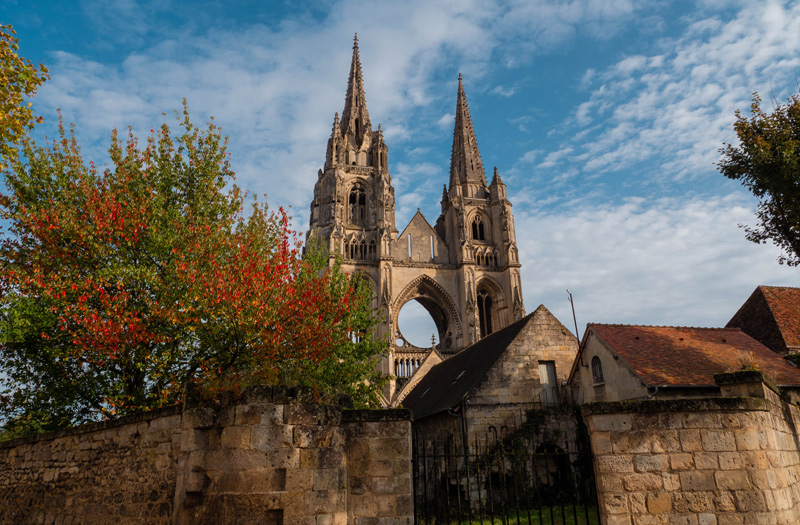
The Abbey of Saint Jean des Vignes, seen in the sunlight. The two towers rise more than 230 feet. But the stained glass window isn’t all that’s missing. Photo courtesy of Tourism Soissons
The Abbey of Saint Jean des Vignes
The towers of the Abbey of Saint Jean des Vignes, not far from Soissons’ cathedral, lord it over the landscape. At 75 metres (246 feet) and 80 metres (262 feet) respectively, they are the tallest structures for miles around. But, hang on a minute – where is the rose window that fits in that empty space between the towers? And, actually, where is the rest of it? Unlike other ruins, this relict was not destroyed by the revolutions, religious wars and world wars that ravaged the area.
And thereby hangs a tale.
When the Abbey was built for an Augustinian community of canons, in the 11th century, it was one of the richest religious establishments in France. Its Gothic facade was added in the 13th century and the towers in the 15th and 16 centuries.
Come the Revolution
When the Church was suppressed after the French Revolution, many of its greatest buildings were sacked for the riches they contained. Napoleon ordered the destruction of this church in 1805 so that its materials could be used for military and civil engineering projects. The people of Soissons objected and in the end, the facade and the two towers were saved. The cannons’ refectory remains attached to one side of the facade. The undercroft or cellars, filled with a forest of columns and arches that support what is left of the structure, are used as an art gallery and exhibition space.
Ask at the tourist office, opposite the main parking for quick lunch suggestions or shops where you can pull together the ingredients for a picnic on the road. Then leave Soissons on the N31 for the N2 heading northeast to Laon. Stay on the N2 all the way to the Laon Citadel where there is free public parking within easy walking distance of most of Laon’s attractions. It’s an easy 36 kilometres (22 miles) except for a few hairpin turns (not really hair-raising) as you climb to Laon, “the crowned mountain”.
Late Afternoon Day 2 – Laon, the crowned mountain
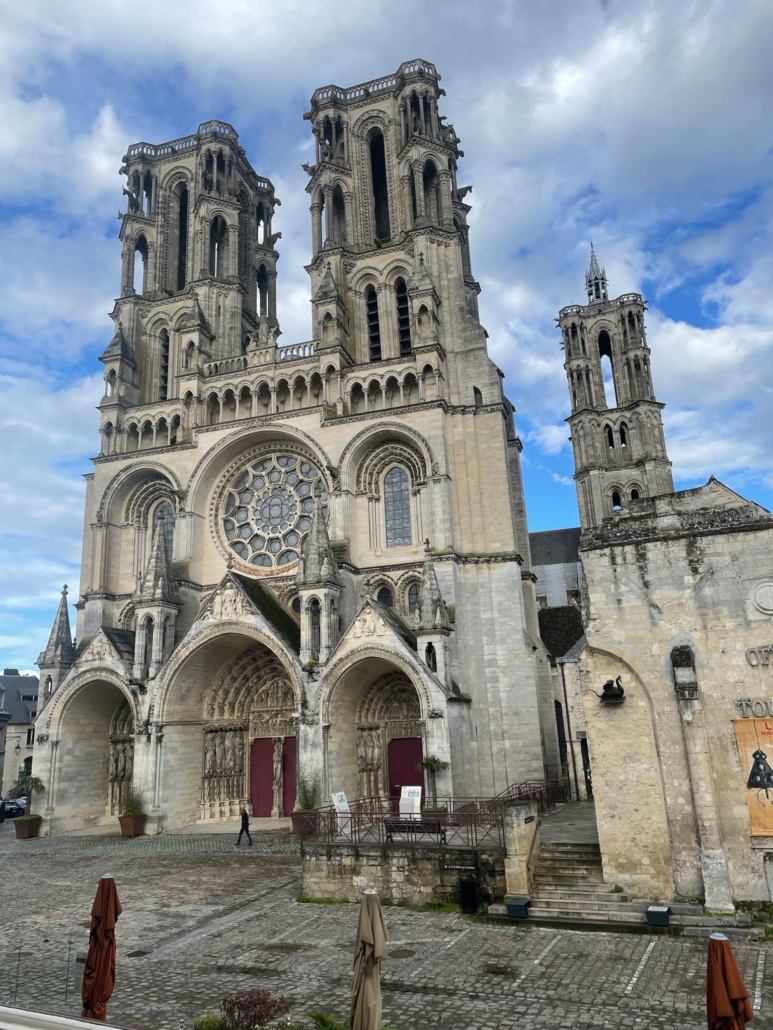
The facade of Notre Dame de Laon Cathedral rises above the plains of Aisne. © Ferne Arfin
It’s easy to see why they call Laon the crowned mountain; the six impressive towers of its Gothic cathedral, Notre Dame de Laon, can be seen for miles before you actually reach the town. It is one of the earliest Gothic cathedrals in France, begun some time between 1155 and 1160.
Laon is a genuine medieval gem. It claims to have the biggest protected historical centre in France. At least 83 buildings classified as historic monuments are packed into its upper town, surrounded by 8 kilometres of early Medieval walls.
Check into your hotel. Weather permitting and have a drink on the terrace of the Logis du Parvis, which probably occupies the prime spot in town, facing the cathedral. That’s the view, by the way, in the picture left.
Laon may be small but there is a fair amount to do here, so a stop the the local tourist information centre is probably a good idea. Luckily, it’s beside the cathedral. See the short flight of steps in the lower right-hand corner of the picture? The tourist office is just there, on the right. If it’s not too busy, ask someone to show you the cellars beneath the office. They were once a refuge for pilgrims visiting the church. Today, among the exhibitions, is a diorama of the town in the Middle Ages that shows its position along the ridge of a hill about 100 meters above the Picardy plain. The exhibit makes it very clear why Laon is known as le Montagne Couronnee ( so much nicer in French, isn’t it?).
Finish the day with a visit to the Cathedral
Built at about the same time as Notre Dame Paris, Notre Dame de Laon is light and airy inside, a rather delicate example of early Gothic. There are a few surprises, inside and out as well – have a look below.
And so to bed
Laon seems to have the biggest selection of accommodation and dining options of the towns on this tour though not all are within the walls of the upper town.
I stayed at Logis du Parvis which must command the best spot in Laon, on Place du Parvis, about 50 paces from the entrance to both the Cathedral and the tourist information office. Despite the location, with the hotel’s restaurant and bar directly below, my room was surprisingly quiet. By about 10 p.m. the square was deserted and the bar patrons incredibly discreet.
I stayed in a very spacious corner double with good bathroom facilities and a nice rain shower – which did, however, flood the whole bathroom. But all in all, the facilities were very good, the services fine and the views – Cathedral on one side, cobbled lane on the other – were smashing.
The hotel has a restaurant – Le Parvis – which serves traditional cuisine with a local slant – carbonnades de boeuf served with slices of gingerbread tucked into the gravy (odd and sweet but apparently traditional), cloyingly sweet lemon tart piled in a parfait dish with meringue. The food is competent and the breakfast – with fresh fruit, croissants breakfast pastries – nice. I did find the desserts over-sweet but, frankly, that was my experience throughout this area. If you don’t have a sweet tooth, stick with fruity desserts.
See what Tripadvisor visitors thought or find other accommodation and dining options on TripAdvisor.
Day 3 – Explore Laon
To my mind, Laon is the jewel of this whole region. It has more than enough that’s of interest to fill another whole day in the town. Here are just some to consider:
- Visit Laon Underground – A series of passages, quarries and tunnels are cut under the town. Also known as the “perched underground of the Citadel” because of their position near the top of the crowned mountain, they were used as shelters during wars – for civilians and soldiers, quarries that provided the limestone for most of the town, and storage. Tours, at 8€ for adults, must be booked at the tourist office. Tours in English are limited to once or twice a day. Audiotours are apparently available however I was not offered one in English so I suspect they may only be available in French. This is an interesting hour and a half but I wish I had advanced warning that:
- Our guide would race ahead of us. Unless you keep up with the head of the pack, you can miss most of what he says.
- Some of the tunnels are close to the surface so they’re damp and slippery from penetrating rain. If you are at all nervous about walking on uneven, muddy paths, often in the dark, bring along a walking stick.
- You should bring a bottle of water as it’s a long time in the dark with nothing to drink.
- There are no obvious restrooms until you reach the end of the tunnel and you have to ask your guide to lead you into it because it is unlit.
- The Museum of Art and Archaeology – Exhibits installed in a former Templar hotel include more than 2,000 items covering fine and decorative arts, regional and Mediterranean archaeology. The collection of items from Greece, Cyprus, Egypt, the Etruscan and Roman worlds is considered second only to the Louvre in Paris.
- The Templars’ Chapel – The Knights Templar, with the support of the Bishop of Laon, established a house in the town that served as a base for several of their expeditions to Jerusalem. The order was founded in about 1128 and the funerary chapel, in the Templars’ characteristic octagonal style, was built around 1140 (or 1134, or 1180 – depends upon who you ask). The porch was added later. The chapel is on the grounds of the Museum of Art and Archaeology. As the time of writing, it was closed for restorations. It normally contains the museums lapidary collection.
- Walk the town walls and explore the narrow lanes – Laon has 8 kilometers of ramparts. Many sections of them are accessible to walkers, offering sensational views of the lower town and the remarkably flat Picardy plains beyond. It’s also worth giving yourself time to just wander about in the upper town, discovering its narrow lanes and numerous listed Medieval buildings.
Click images below for captions and credits
- Visit Laon Underground – A series of passages, quarries and tunnels are cut under the town. Also known as the “perched underground of the Citadel” because of their position near the top of the crowned mountain, they were used as shelters during wars – for civilians and soldiers, quarries that provided the limestone for most of the town, and storage. Tours, at 8€ for adults, must be booked at the tourist office. Tours in English are limited to once or twice a day. Audiotours are apparently available however I was not offered one in English so I suspect they may only be available in French. This is an interesting hour and a half but I wish I had advanced warning that:
At the end of this itinerary head back to Paris on the N2. It will take about two hours. Alternatively, explore Pas de Calais, aiming for the Channel Ports of Calais or Dunkerque.
Did you know? Fun facts about Laon
- Charlemagne’s mother, Bertrada Queen of the Franks, was born in Laon in the early 8th century. The first Holy Roman Emperor’s mother was also known as Bertha Big Foot. She married Pepin the Short (those Franks did have a way with names) but they were too closely related for the Church’s approval. So their marriage went unsanctioned until Charlemagne was born. Ironically, some people say that the first Holy Roman Emperor was, technically, born a bastard.
- For a while, in the 8th and 9th centuries, Laon was the capital of France – well at least that part of France known as Francia controlled by the Franks under the Carolingian kings.
- Mississippi explorer Jacques Marquette was another native son, born in Laon in 1697. Together with Louis Jolliet, the Jesuit missionary explored and mapped the northern Mississippi River Valley. He also founded Sault Sainte Marie, Michigan’s first European settlement.
- The name Laon is one that most foreigners, including French speakers have trouble pronouncing. Instead of me trying to explain it, why not listen to an expert here?
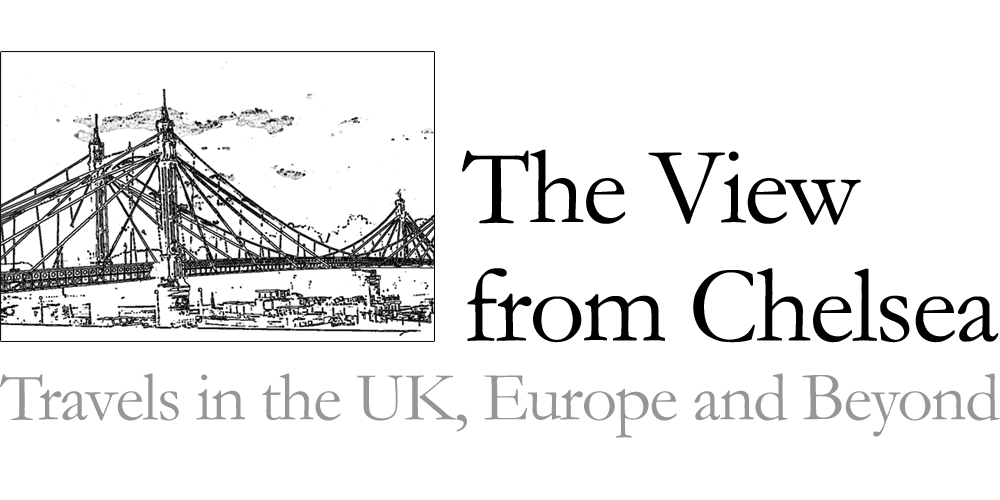
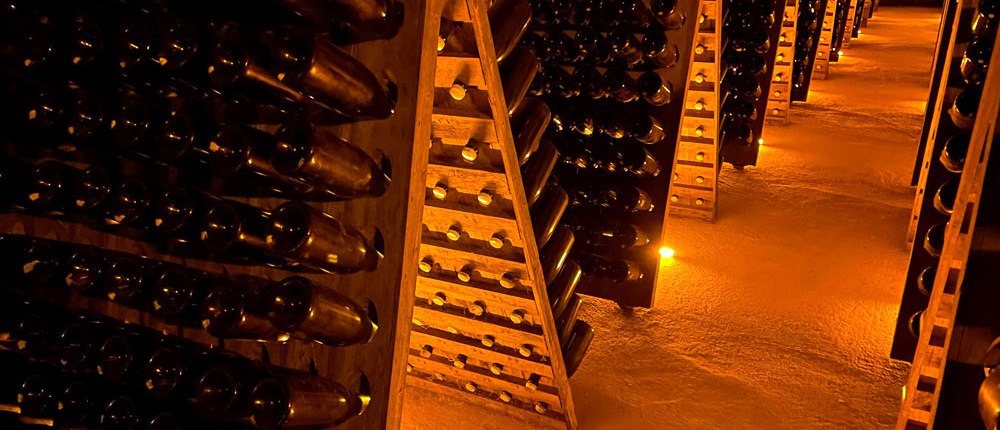
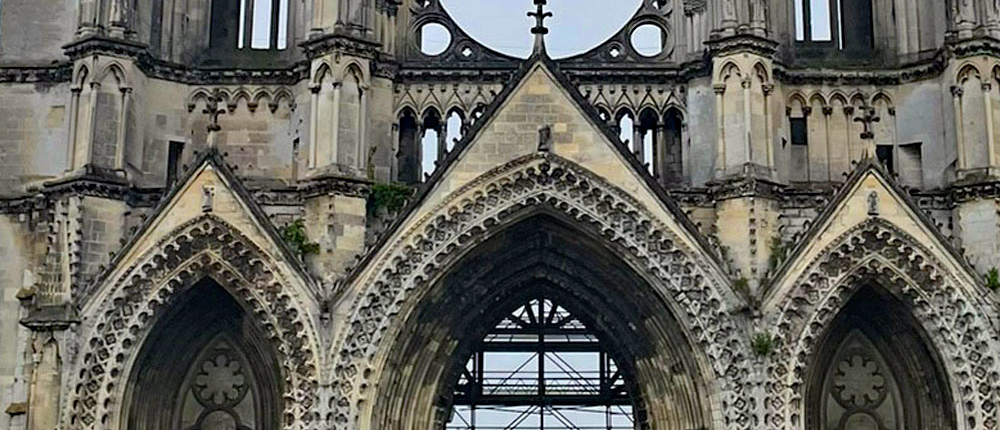
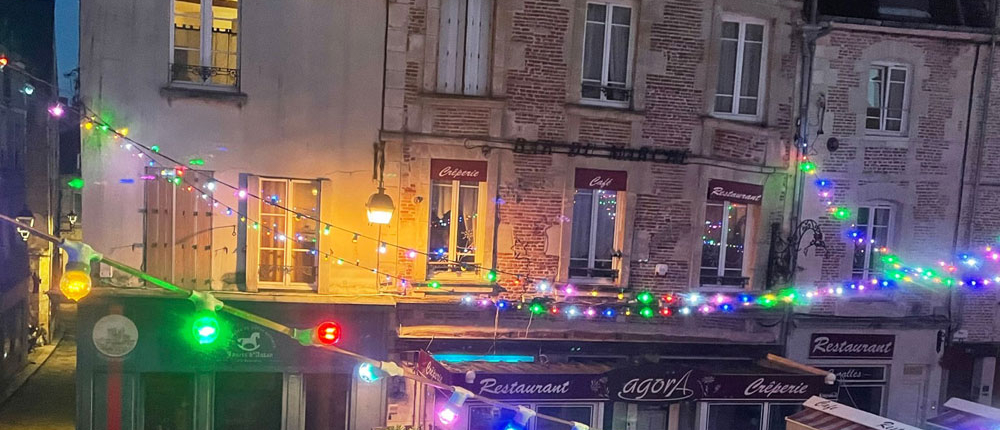
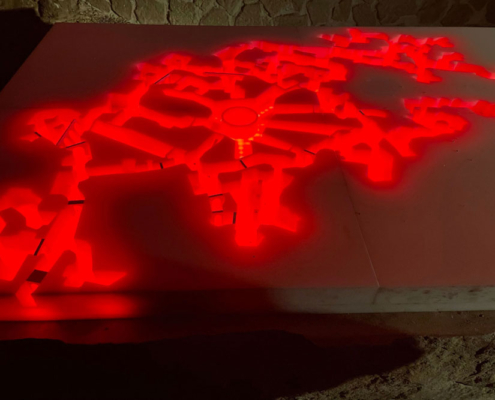
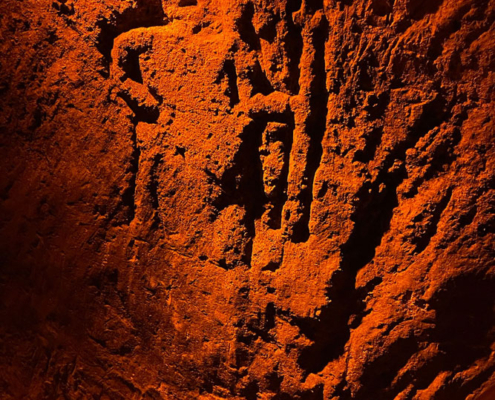
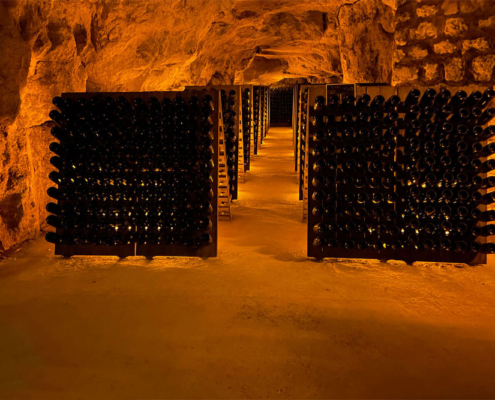
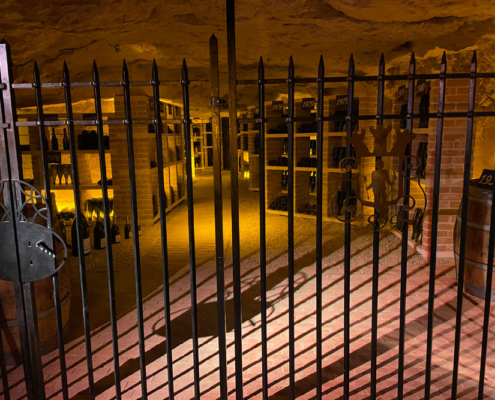
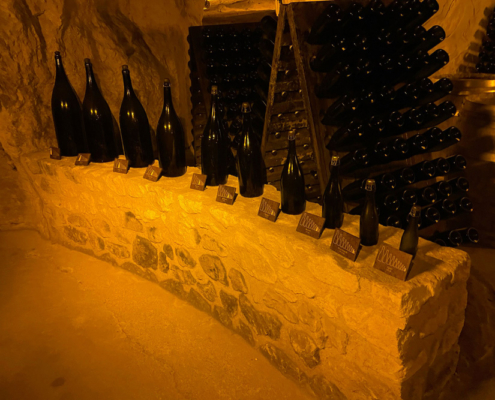
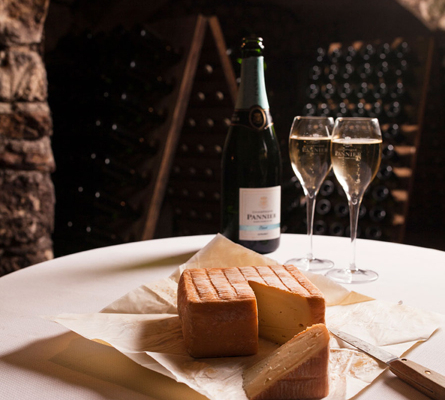
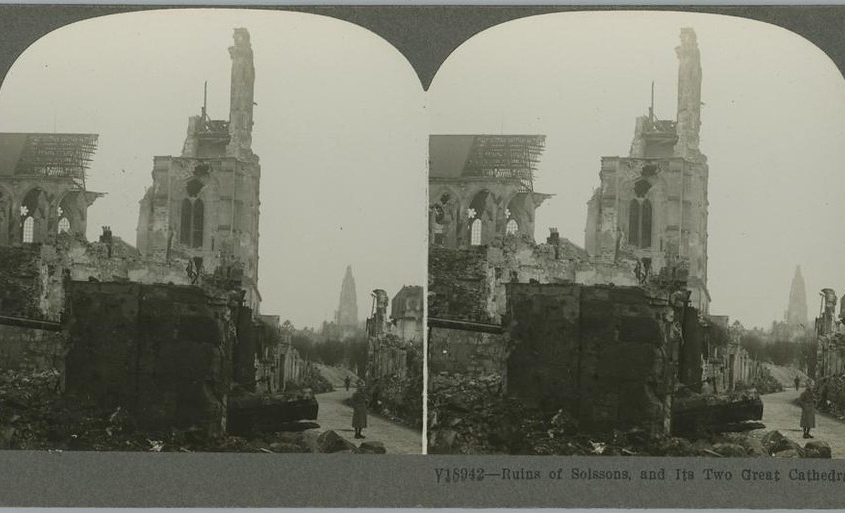
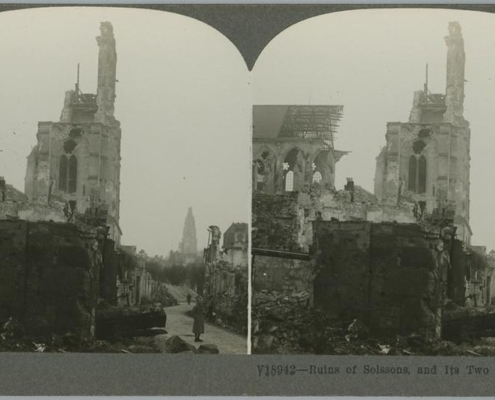
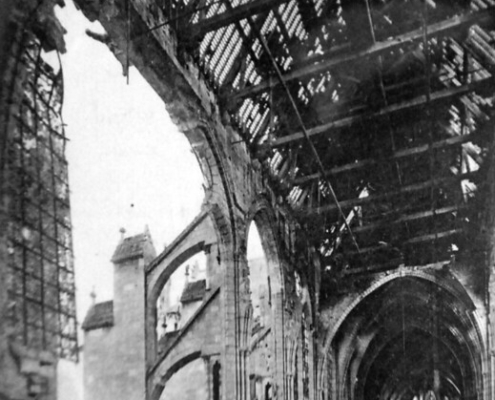
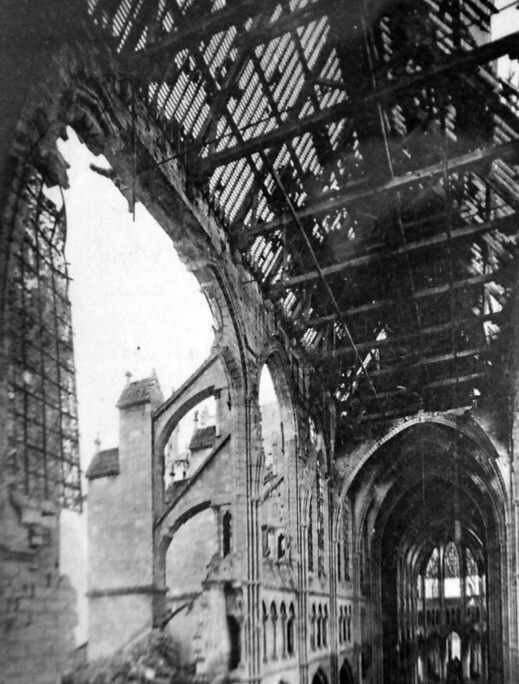
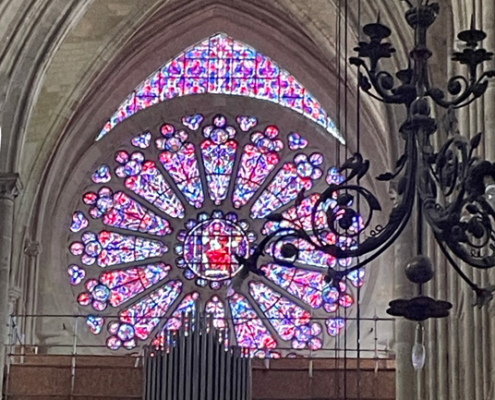
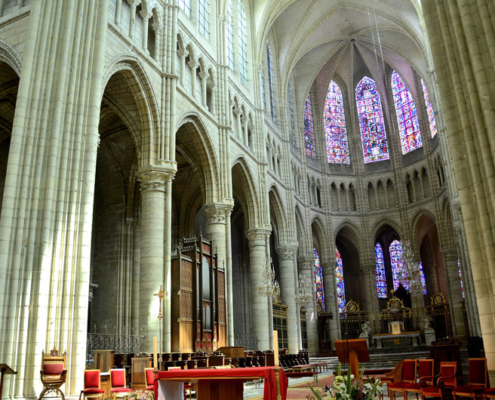
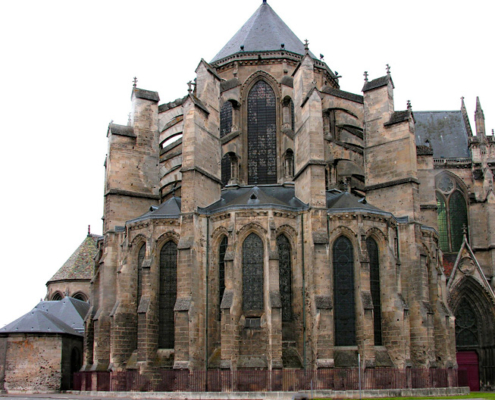
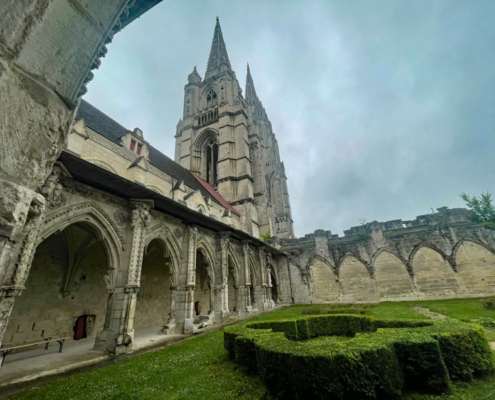
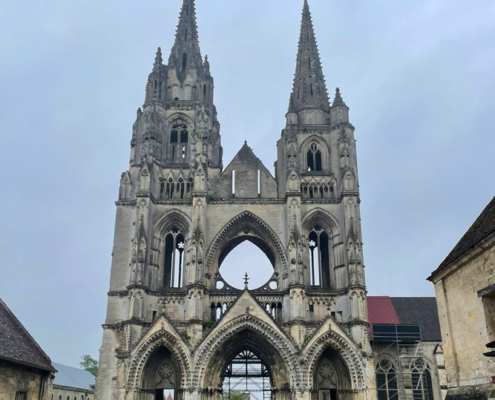
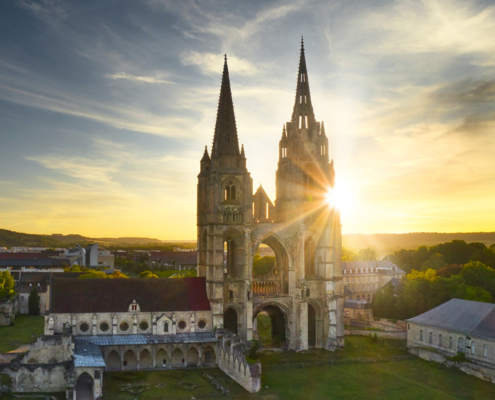
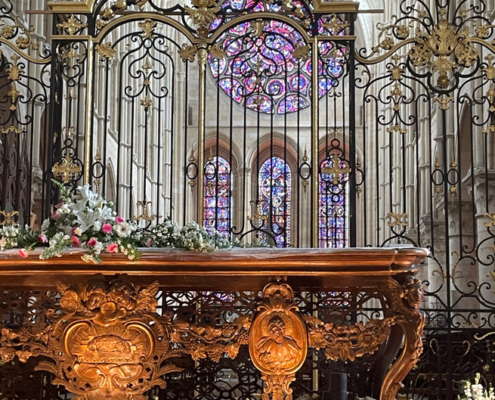
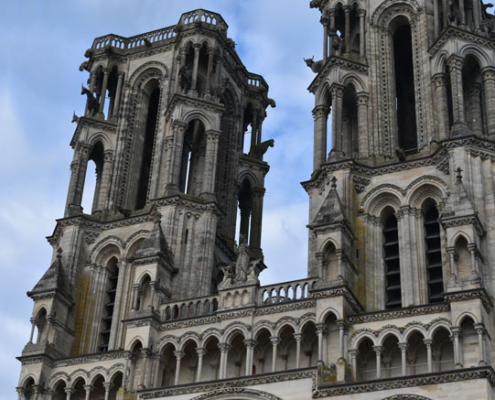
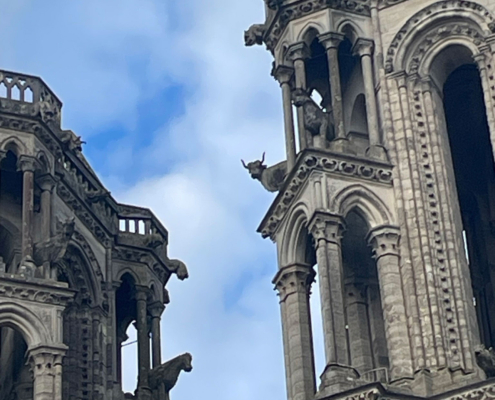
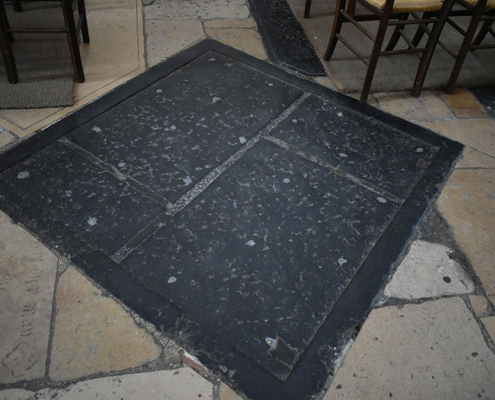
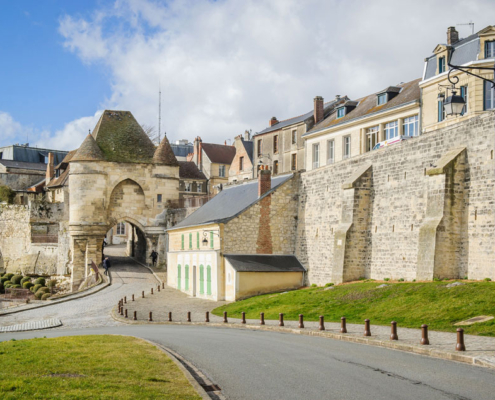
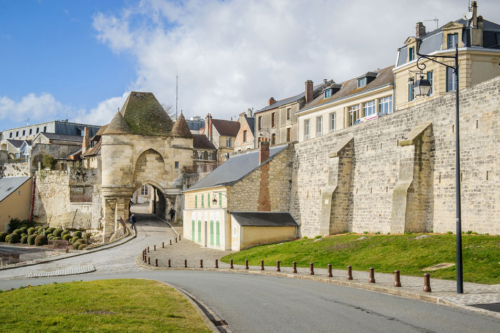
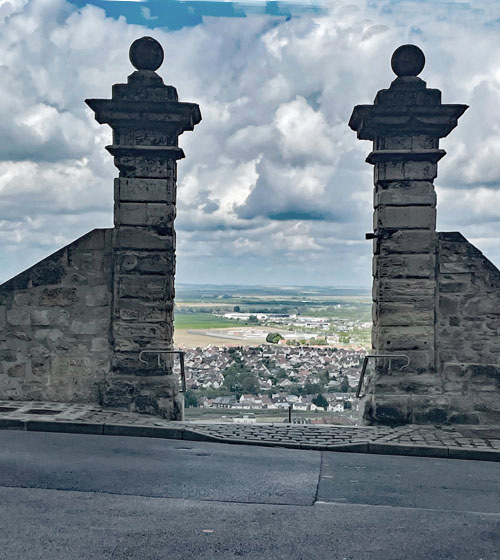
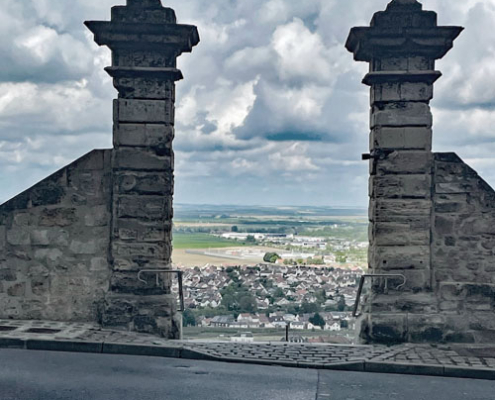
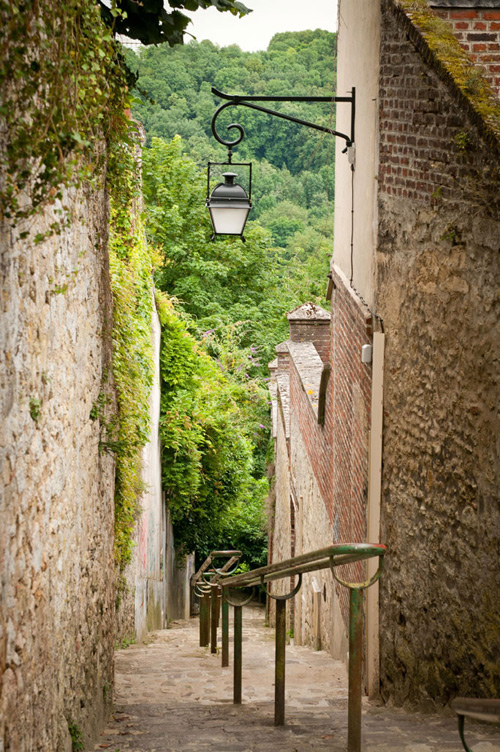
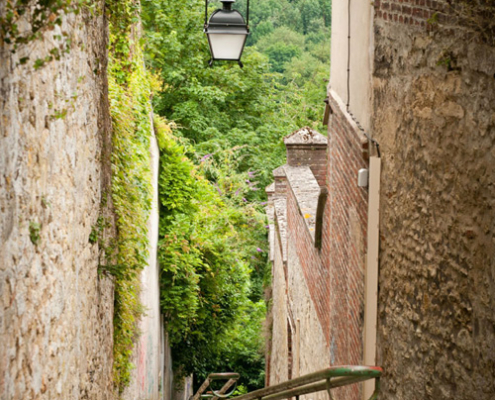


 Ferne Arfin 2023
Ferne Arfin 2023
Leave a Comment
What do you think?Please add your comments and suggestions here.